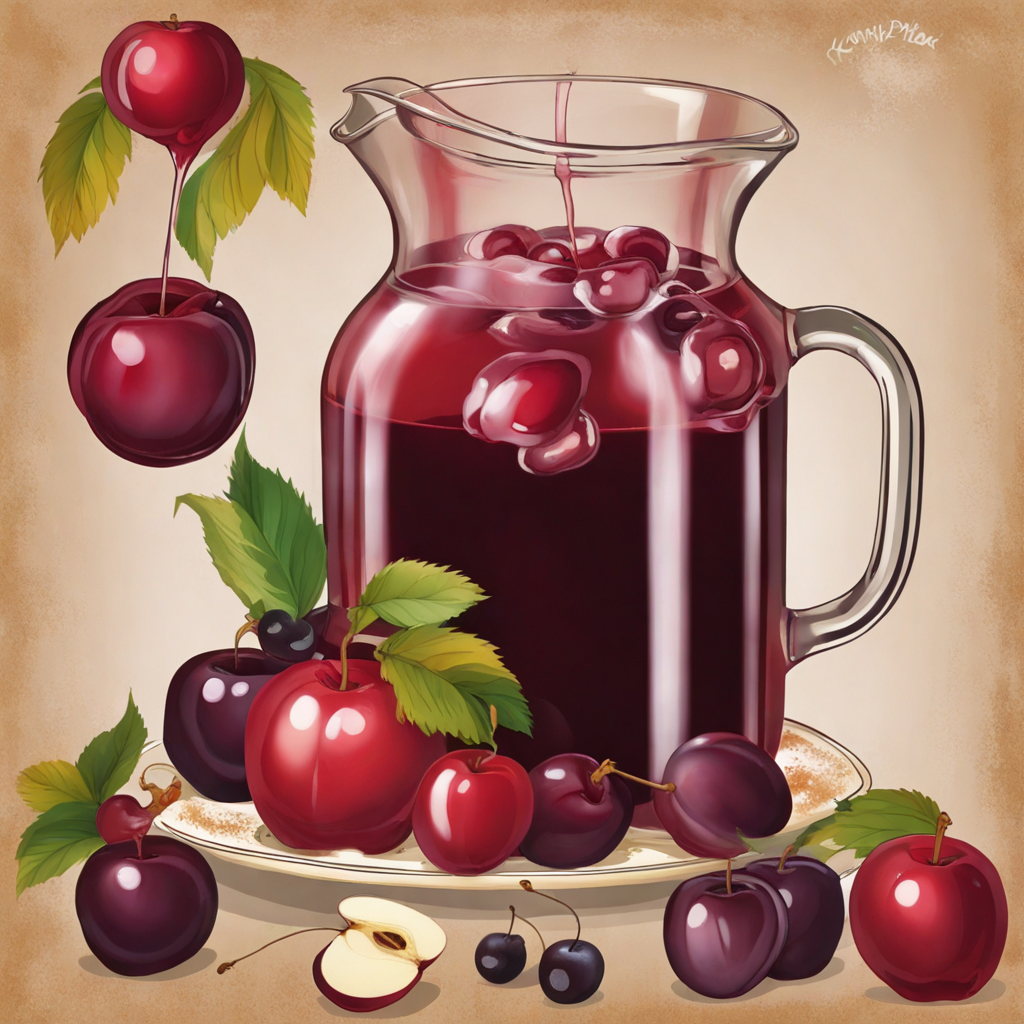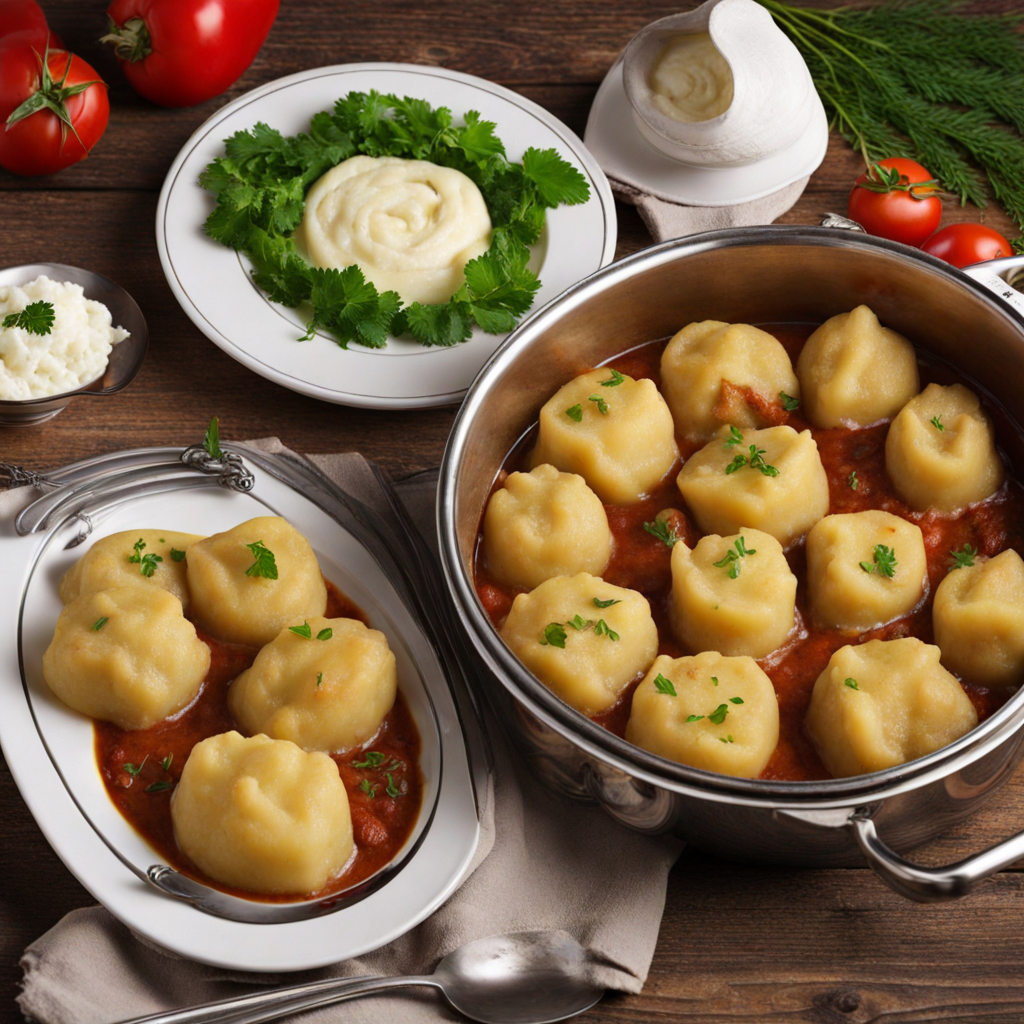Chłodnik
Chłodnik is a traditional Polish cold soup that offers a refreshing taste, perfect for warm weather. At its core, chłodnik is made from a base of buttermilk or yogurt, which provides a creamy texture and tangy flavor. This chilled soup is typically enriched with a variety of fresh ingredients, such as finely chopped cucumbers, radishes, and dill, creating a vibrant and colorful dish. The combination of these ingredients not only adds a crunch but also brings a delightful contrast of flavors, making every spoonful a unique experience. One of the standout features of chłodnik is its versatility, as it can be adapted to suit various tastes and preferences. While the classic version uses beets, giving it a beautiful pink hue, there are many regional variations that include different vegetables and herbs. For example, some may add potatoes, hard-boiled eggs, or even a splash of vinegar for an additional tang. This adaptability makes chłodnik not only a staple during the summer months but also a dish that can be enjoyed throughout the year with seasonal ingredients. Chłodnik is often served as a light appetizer or a side dish, but it can also serve as a satisfying main course when paired with crusty bread. Its cooling properties make it an ideal choice for picnics or outdoor gatherings, where it can be enjoyed straight from the bowl or in a jar. The balance of creamy, tangy, and fresh flavors creates a harmonious dish that showcases the essence of Polish cuisine, inviting anyone who tries it to savor the simple yet delightful tastes of summer in Poland.
How It Became This Dish
Chłodnik: A Chilled Polish Delight #### Origins of Chłodnik Chłodnik, a refreshing cold soup traditionally associated with Poland, finds its roots in the culinary practices of Eastern Europe. Its basic components typically include beets, cucumbers, and buttermilk or sour cream, creating a vibrant pink hue that is as visually appealing as it is delicious. The very name "chłodnik" stems from the Polish word "chłodny," meaning "cold," aptly describing this dish's most defining characteristic. The earliest known references to chilled soups in Poland date back to the 16th century, but the dish evolved significantly over time. Beets, one of the primary ingredients, have been cultivated in the region since antiquity. They were introduced to Poland by the Romans, and over the centuries, they became a staple of Polish cuisine. The use of beets in chłodnik showcases the agricultural bounty of the region, highlighting how local ingredients and climate influenced culinary practices. #### Cultural Significance Chłodnik is much more than just a dish; it embodies the essence of Polish culinary tradition and culture. Traditionally served during the warm months, particularly in summer, it is a symbol of seasonal eating and celebration. The soup’s vibrant colors and refreshing flavors make it a popular choice at family gatherings, festive occasions, and summertime picnics. Moreover, chłodnik is often associated with the Polish way of life, emphasizing communal dining and sharing. In many Polish households, it is customary to serve chłodnik as part of a larger meal, accompanied by boiled potatoes or rye bread. The dish's preparation often brings families together, with each generation passing down their unique recipes and variations. Chłodnik also plays a role in various cultural and religious festivities. For example, it is commonly served during the feast of St. John, celebrated in June, marking the arrival of summer and the harvest season. It is also enjoyed during Easter celebrations, where it may be served alongside traditional Easter dishes such as pierogi and eggs. #### Ingredients and Variations The traditional recipe for chłodnik is simple yet versatile, allowing for numerous regional variations. The essential ingredients include beets, cucumbers, dill, and a creamy base, usually buttermilk or sour cream. However, the specifics can vary greatly depending on local customs and personal preferences. In the region of Podlasie, for instance, a version called "chłodnik litewski" (Lithuanian cold soup) is popular, which incorporates ingredients like radishes and boiled eggs. This variation reflects the historical ties between Poland and Lithuania, showcasing how culinary traditions can transcend borders. Another popular variation is "chłodnik z botwiny," which is made with young beet greens and often includes potatoes. This version highlights the importance of utilizing fresh, seasonal produce, a hallmark of Polish cooking philosophy. #### Development Over Time As Poland's history unfolded through the ages, so too did the evolution of chłodnik. The partitions of Poland in the late 18th century and the subsequent influence of neighboring cultures played a significant role in shaping Polish cuisine, including this beloved soup. Ingredients and techniques from German, Russian, and Jewish culinary traditions found their way into Polish kitchens, enriching the flavors and preparations of chłodnik. In the 20th century, the rise of globalization and the movement of people across borders further influenced Polish cuisine. The introduction of new ingredients, such as yogurt and alternative dairy products, brought new dimensions to chłodnik. As Polish immigrants settled in various parts of the world, they adapted traditional recipes to incorporate local ingredients and tastes, allowing the dish to evolve while still retaining its core identity. Modern chefs are now reinterpreting chłodnik, adding contemporary twists and presenting it with artistic flair. Some variations include the use of avocado for creaminess or the incorporation of other seasonal vegetables, reflecting a growing trend towards fusion cuisine. This evolution illustrates how traditional foods can adapt over time while still honoring their heritage. #### Chłodnik in the Present Day Today, chłodnik continues to hold a special place in Polish cuisine and culture. It is celebrated not just in homes but also in restaurants and culinary festivals across Poland. As health-conscious eating trends gain momentum, the dish’s inherent qualities—being light, nutritious, and refreshing—make it an appealing option for many. Moreover, as global interest in Eastern European cuisine grows, chłodnik is gaining recognition beyond Poland's borders. Food bloggers and culinary enthusiasts are discovering and sharing this dish, introducing it to new audiences and inspiring home cooks to try their hand at making it. Festivals celebrating Polish culture, such as the annual Polish Festival in Chicago, often feature chłodnik as a star dish, allowing the diaspora to reconnect with their culinary roots. This revival of interest showcases how food can serve as a bridge between cultures and communities, fostering a sense of belonging and identity. #### Conclusion Chłodnik is more than just a cold soup; it is a vibrant tapestry of history, culture, and tradition woven together by the threads of local ingredients, seasonal eating, and communal sharing. Its evolution over the centuries reflects the resilience and adaptability of Polish cuisine, showcasing how traditional foods can thrive in modern culinary landscapes. As we savor a bowl of chłodnik today, we not only indulge in a delightful dish but also partake in a rich cultural heritage that has been passed down through generations. Whether enjoyed in a bustling Polish kitchen, at a summer picnic, or in a trendy restaurant, chłodnik remains a beloved emblem of Poland’s culinary identity, inviting us to celebrate the flavors of summer and the enduring spirit of Polish tradition.
You may like
Discover local flavors from Poland







